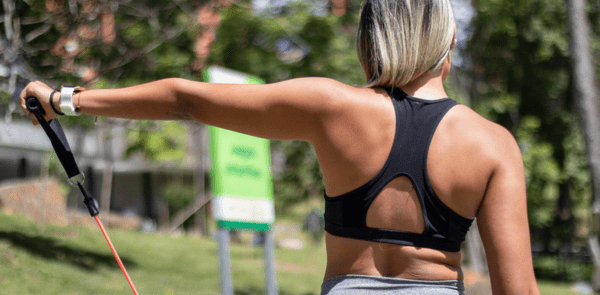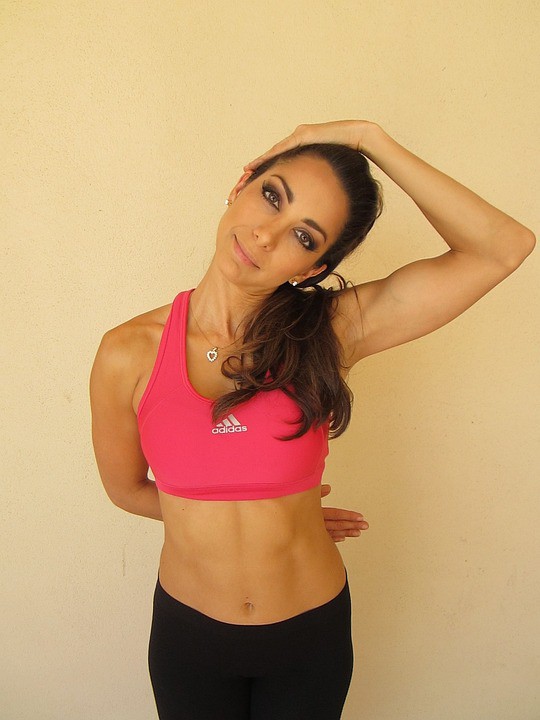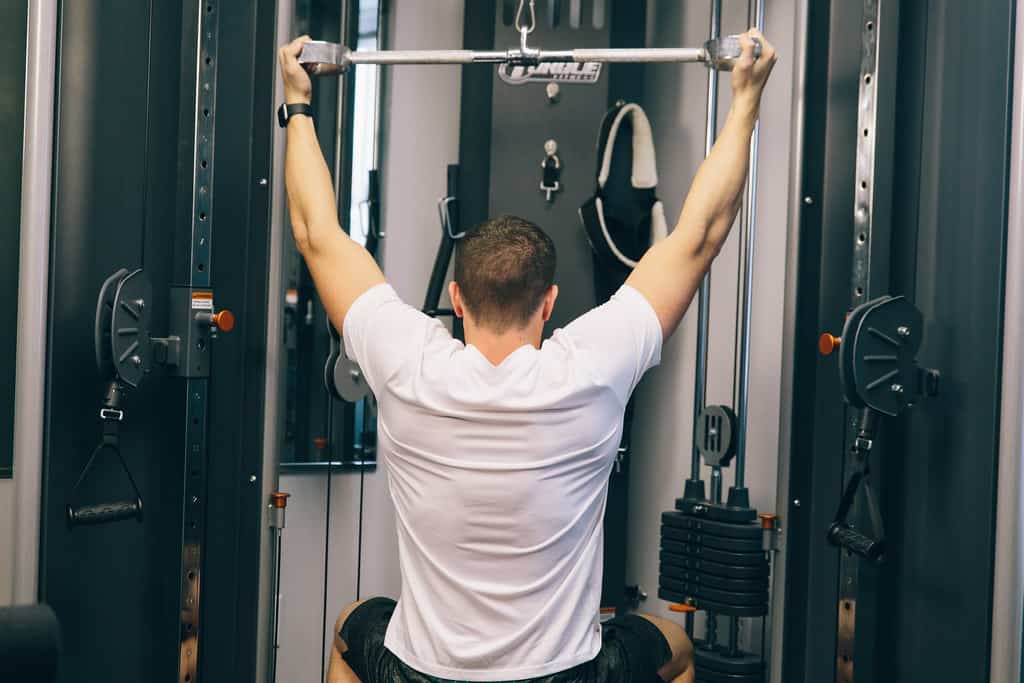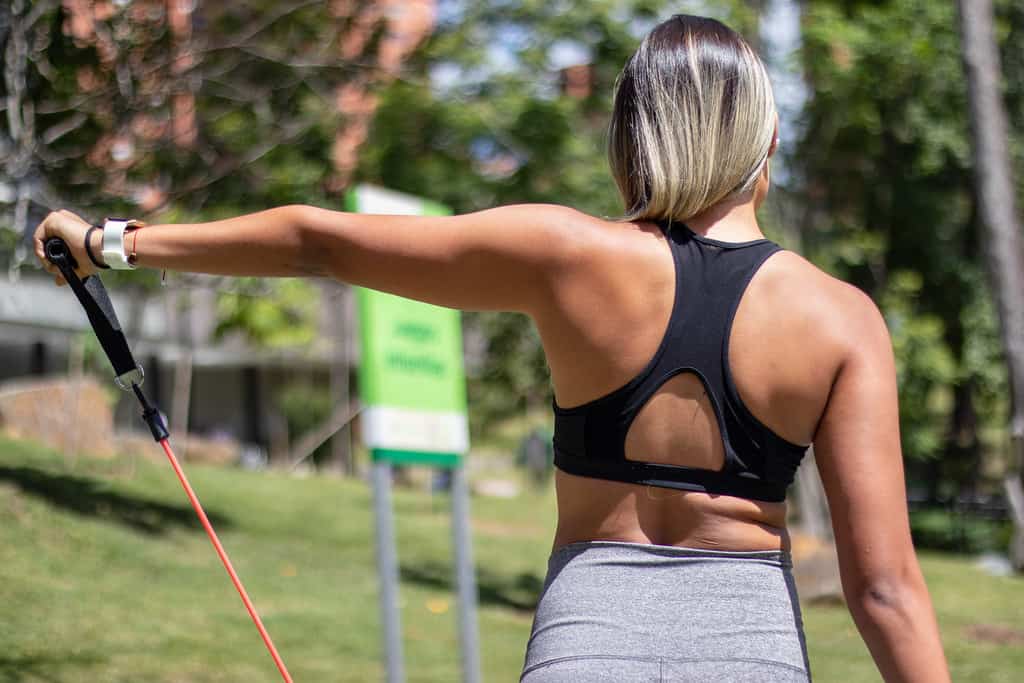A strong and healthy neck, back and shoulder is essential for our overall well-being. But these muscles are often at risk due to sedentary lifestyles and poor posture habits. They can become weakened and strained, leading to discomfort and pain.
One of the best ways to prevent and alleviate these issues is through regular exercise. These exercises focus on the neck, back, and shoulder muscles. Here’s how to perform each correctly so you can incorporate them into your workout plan in no time!
Neck Exercises
Having strong neck muscles can help control the whipping motion of the head. Maintaining it is critical for proper posture and head, neck, and back pain prevention. Cue neck exercises, which refer to physical activities targeting the neck region muscles.
Neck exercises can benefit everyone. From reducing stiffness to improving posture and blood flow, they leave positive effects. Below are a couple of easy workouts for your neck pain and/or neck improvement overall.
1. Neck stretches
- Sit straight and slowly lower your chin towards your chest, feeling a stretch in the back of your neck. Hold for 10-15 seconds, then slowly lift your head back up to the starting position.
- Next, tilt your head to one side so your ear approaches your shoulder. Hold for 10-15 seconds, then repeat on the other side.
- Finally, turn your head to one side so that you are looking over your shoulder. Hold for 10-15 seconds, then repeat on the other side.
2. Neck rotations
Sit straight and slowly turn your head to one side, as far as is comfortable. Hold for 5-10 seconds, then slowly turn your head back to the starting position. Repeat on the other side.
3. Neck isometrics
Sit straight and place one hand on the side of your head, just above your ear. Push your head against your hand, using your neck muscles to resist the pressure. Hold for 5-10 seconds, then repeat on the other side.
Start with light intensity and gradually increase the difficulty and duration over time. Avoid jerking or sudden movements, as these can increase the risk of injury.
Back Exercises
Strong back muscles help you move your body, bend over, rotate your trunk and stand up straight. They also play an important role in supporting the spine and in the way you breathe. Strengthening it can do wonders for your physical and mental well-being.
A back exercise targets the muscles of the back, including the lats, traps, and erector spinae, to name a few. A regular workout also contributes to improved balance & coordination. Moreover, when lifting, pulling, and pushing, which benefits the upper back muscles.
1. Bent-over rows
- Stand with your feet shoulder-width apart and hold a dumbbell in each hand.
- Bend forward at the waist until your back is nearly parallel to the floor. Keep your knees slightly bent.
- With your palms facing down, pull the dumbbells up towards your chest. Squeeze your shoulder blades together as you lift.
- Slowly lower the weights to the starting position.
Repeat for: 10 sets, 12 reps.
2. Lat pulldowns
- Sit at a cable machine and grasp the bar with your palms facing forward. Your hands must be wider than shoulder-width apart.
- Pull the bar down towards your chest, squeezing your shoulder blades together as you do so.
- Slowly release the bar back up to the starting position.
Repeat for: 10 sets, 12 reps.
3. Back extensions
- Lie on a back extension bench with your hands behind your head. Keep your feet secured under the footpads.
- Slowly lift your chest off the bench, using your lower back muscles to lift your upper body.
- Hold for a few seconds at the top. Then, slowly lower your chest back down to the starting position.
Repeat for: 10 sets, 12 reps.
Focus on proper form. Use a full range of motion to get the most out of your back exercises. Start with light weights to ensure you’re using proper form throughout the exercise.
Shoulder Exercises
Strong shoulder muscles stabilise all the muscles included in the core. Your ability to stand or run without losing your balance – that’s your shoulder muscles doing the job. They give strength and stability, and they’re voluntary, which means you control them.
The best way to do so is to keep them moving with shoulder exercises. A regular routine can make them look broader and more defined. It can also result in a well-balanced and visually appealing upper body build.
1. Dumbbell shoulder press
- Sit on a bench with your back straight and feet flat on the ground.
- Hold a dumbbell in each hand at shoulder level with your palms facing forward.
- Press the weights straight up over your head until your arms are fully extended.
- Slowly lower the weights back down to shoulder level.
Repeat for: 10 sets, 12 reps.
2. Lateral raises
- Stand with your feet shoulder-width apart and hold a dumbbell in each hand at your sides.
- Raise your arms out to the sides until they are parallel to the ground, keeping your elbows slightly bent.
- Hold for a few seconds at the top. Then, slowly lower the weights back down to your sides.
Repeat for: 10 sets, 12 reps.
3. Face pulls
- Attach a resistance band to a sturdy anchor point at chest level.
- Grasp the band with both hands and step back until there is tension in the band.
- Pull the band towards your face, keeping your elbows high and your shoulders down and back.
- Slowly release the band back to the starting position.
Repeat for: 10 sets, 12 reps.
Note: The shoulder joint is particularly vulnerable to injury. Avoid using too much weight or resistance when doing these exercises.
Incorporate a variety that targets different muscles in the shoulder in the shoulder area. You may consider the following:
- Bent-over reverse flyes: Targets the rear delts (deltoids).
- Arnold press: Aims the anterior and lateral delts.
- Upright row: Focuses on the trapezius muscle, anterior and lateral delts.
Doing so helps ensure counterbalance and avoids overuse injuries.
Round-up
Consult with a qualified fitness professional or healthcare provider before starting. This is particularly important if you have a history of neck pain or injury.
Experiencing any pain or discomfort during any of these exercises? Stop immediately and consult with a healthcare provider or qualified fitness professional.



 (
( (
( (
(